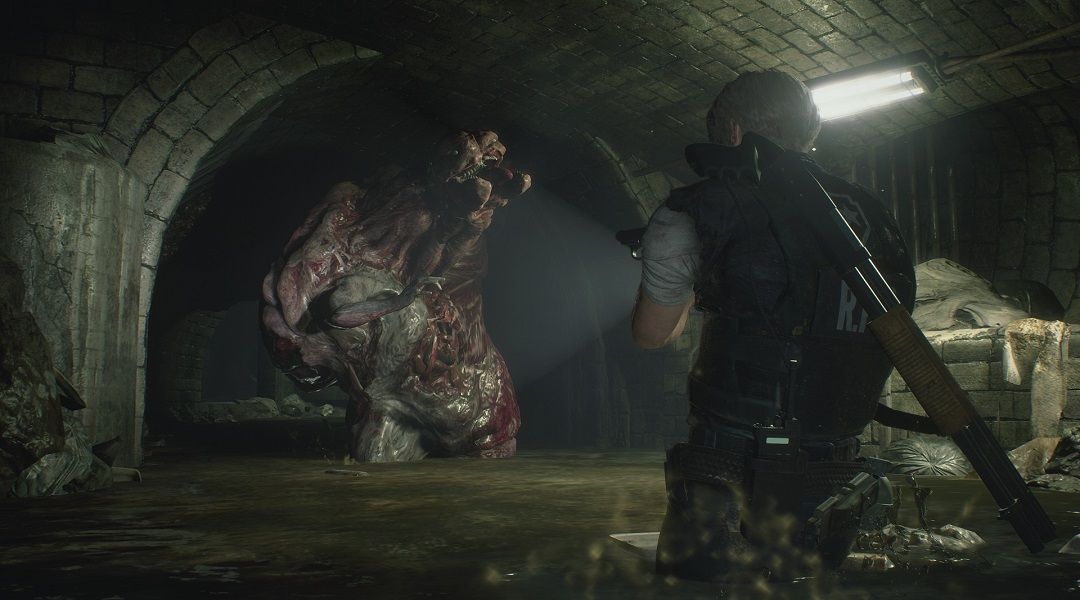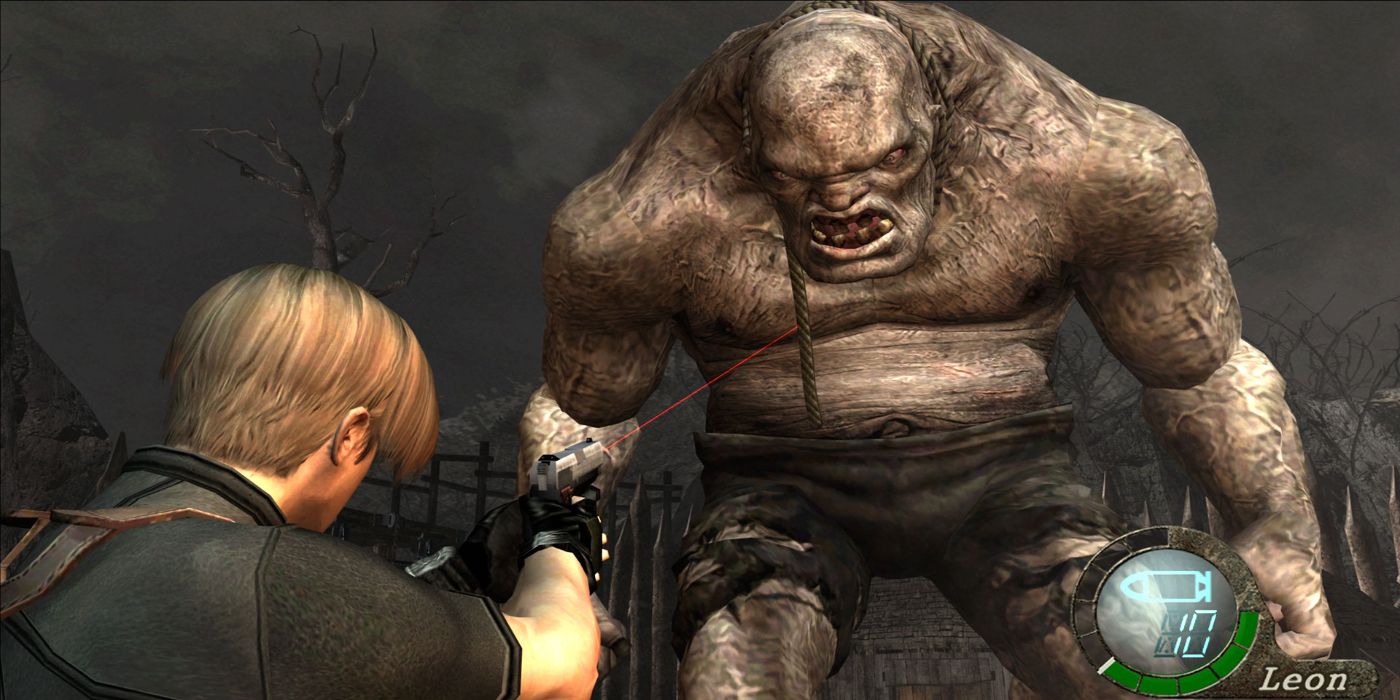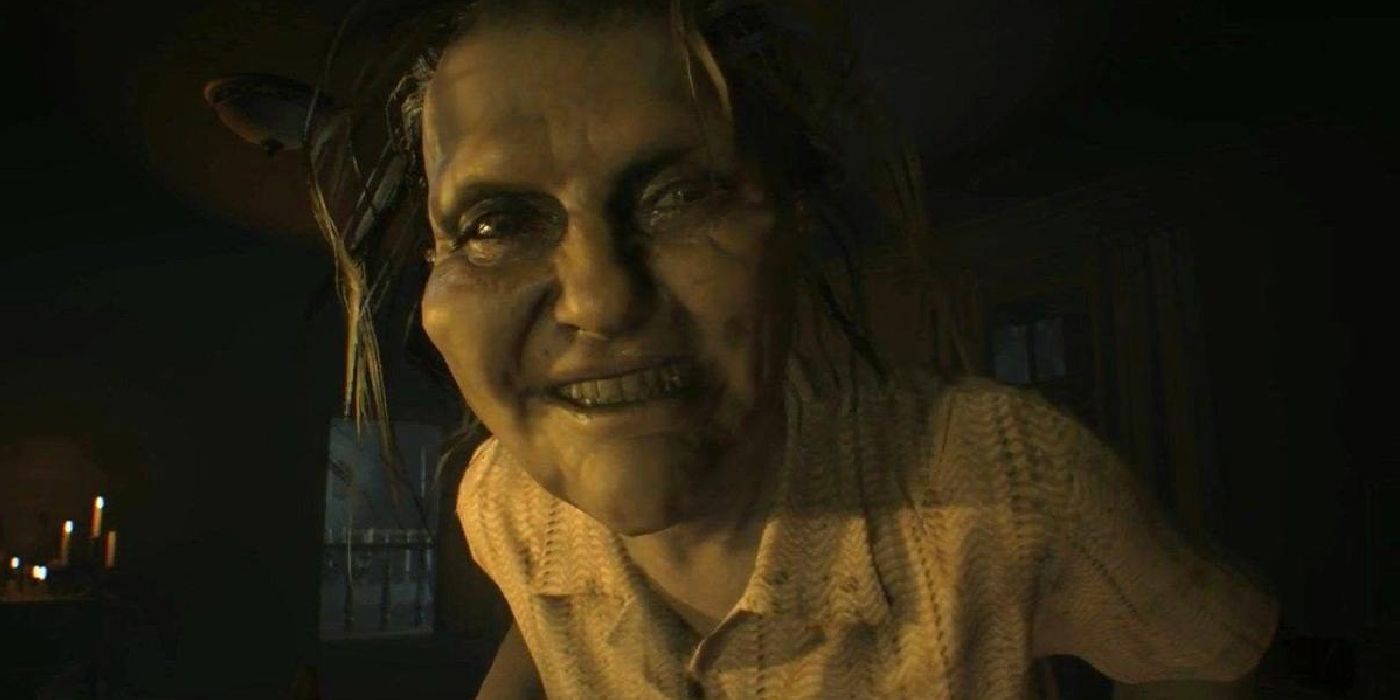Perhaps one of Resident Evil's most intriguing aspects of its universe are the viral monstrosities and lab experiments created and weaponized by corporate entities such as Umbrella, which often tread the lines between controlled and uncontrolled chaos. Behind the history of Resident Evil's long timeline and mysterious characters, many monstrosities are created, sometimes intentionally, and sometimes accidentally.
Trying to follow the evolution of Umbrella's experiments can quickly tie a reader down into a tangled in a web of confusion in attempting to digest it all. Resident Evil presents a universe of genetic, viral, and parasitic lore, with a long list of sub-species, offshoots and stand-alone occurrences of bio-weapon usage in its long history. However, the overall picture and key takeaways from this gigantic world of bio-weaponry research and experimentation can be obtained by taking a close look at Umbrella's origins, and what transpired thereafter, leading up to the development of the T-Virus, and the Raccoon City outbreak later on. Everything which occurs thereafter is mostly set in motion by the precedence Umbrella established in creating the bio-warfare industry for future games, even after the company's collapse.
The Origins: The Progenitor Virus
The origins of Resident Evil's zombie outbreak, and the events that transpire thereafter, technically dates back to the 1800s. It starts with a rare flower which only grew in a particular cave in West Africa, known as the Stairway of the Sun. Most natives in the area who ate the plant were poisoned and died, but among a rare few who survived, they gained supernatural strength and intelligence. A small city was formed in its caverns by brilliant engineers who had survived the flower's properties after consumption, but the city ultimately fell and was overrun with mutated animals that had consumed these plants.
The monstrosities were defeated by the locals in the end, and the city and its flowers were abandoned and closed off by locals, until 1966. That is the year when Umbrella's three founders, Ozwell E. Spencer, Edward Ashford, and Dr. James Marcus, discovered and gained entry into the cave in their quest for high-profit viral research. By 1967, Umbrella was formed, and they were able to create the early mother virus from the plant, known as the Progenitor Virus, through a series of mutations and experiments utilizing the flower's properties.
T-Virus Strains
Ozwell Spencer had his own devilish plans in the secretive laboratory under his mansion in the Arklay mountains outside Raccoon City. Dr. James Marcus joined him in research here. Ozwell's fixation with the Progenitor Virus focused on its use for creating bio-weapons for war, by which the original T-Virus would be created for that purpose.
The T-Virus is actually a loose term, representing an array of different viral strains derived and created from mutations of the Progenitor Virus. In simple analogical terms, one could think of the original West African flower as being version 1.0 of Resident Evil's main virus, while the Progenitor virus represents version 2.0, and the first T-Virus strain represents the final 3.0 version. Every development of the T-Virus thereafter could be conceptualized as 3.1, or 3.2 or some sort of niche iteration such as 3.2a and 3.2b, and so forth, given the complexity of the strains and their diversity.
The first strain of the T-Virus was separated from the Progenitor Virus, establishing its creation in 1978, when Marcus made a breakthrough in applying it to leech DNA. This resulted in the leech creatures observed in Resident Evil 0. What is less clear is whether the leeches played the role of being the conduits that helped separate the T-Virus strain from the Progenitor Virus, or whether the leech's merely happened to be the first batch of test subjects used by the first T-Virus strain.
The important takeaway is clear: Marcus was the first to create the original T-Virus strain, and the leech creatures seen in Resident Evil 0 were perhaps the first concrete T-Virus infected monstrosities in Umbrella's infamous bestiary.
Obviously, the more famous version of the T-Virus is the one known to create zombies. Around the same time that Marcus created his leech creatures, another brilliant scientist, Dr. William Birkin, discovered that humans could be turned into zombies by combining the original T-Virus strain with elements of the real-world Ebola virus, which created this newer T-Virus strain.
Unfortunately for Spencer, he was disappointed that approximately 10% of humans were immune to this T-Virus strain that Birkin cooked up, as he wanted a weapon which could wipe out one hundred percent of an area's populace, in a hypothetical war. Spencer came up with a fairly simple solution in 1981: bond a human egg with reptilian DNA and Dr. Birkin's T-Virus strain, and Hunters could be created.
Hunters were created with the specific role of killing off those pesky human survivors representing the 10% in a hypothetical zombie war zone. The creation of the Hunters also led to another important discovery: the T-Virus made the process of genetic recombination between different species a much more simple process.
T-Veronica Virus
Meanwhile, after 1967, the third founder of Umbrella from the expedition into West Africa, Edward Ashford, went on to open his own Umbrella laboratory in Antarctica, which was more focused on eugenics, than bio-weaponry. He ran his Antarctic Umbrella facility along with his son, the cloning genius Alexander Ashford. In short, this facility created the T-Veronica virus by mixing the Progenitor Virus with the DNA of queen ants. The T-Veronica virus becomes more important in much later Resident Evil games when it makes a partial comeback to help create the C-Virus. It is not as important in establishing the overall foundation of Umbrella's bio-weaponry industry and is definitely a side-story earlier on, so it is only worth a brief mention here.
Tyrant Project
Thus far, it is established that Dr. William Birkin created zombies using a T-Virus strain derived from the Ebola and Progenitor viruses. Once the virus manifests itself and someone fully transforms into a zombie, it was then discovered that a new T-Virus strain is created within the body of a fully transformed zombie. By removing this new T-Virus strain from a zombie and then infecting a new host with it, it offered ample options to mutate other hosts even further into the realm of foul play.
In the dark confines of William Birkin's laboratory below Raccoon City, this is how monstrosities such as Lickers were created. This process of deriving a second-generation T-Virus from a host already transformed by the T-Virus is called the V-ACT process. It also explains why zombies sometimes turn into rabid Crimson Heads after they are put down the first time.
In 1988, this V-ACT process led to the Tyrant Project, which represented ambitions to create the ultimate bio-weapon and product for warfare. By playing around and manipulating these evolved T-Virus strains derived from already infected hosts, Umbrella hoped to mutate a human into unbelievable strength, and, unlike a zombie, they set out to retain its original intelligence. However, only one out of every ten million people had the particular biological traits to be successful hosts for becoming a Tyrant. Almost all subjects either died or lost their intelligence in the process, becoming zombified. This posed a major obstacle for Umbrella.
This delayed the project until the ε strain of the T-Virus could be completed in 1998 in the Arklay mountains laboratory, which helped improve the odds that the host would survive the transformation into a Tyrant. Criminals were used as test subjects to become Tyrant hosts. Umbrella certainly had no shortage of prisoners, given their private ownership of the prison on Rockfort Island, where the first half of Code Veronica took place.
Although test subjects were still prone to failure, the odds were much better thanks to this new strain, and they only needed to be successful in creating one Tyrant. Once a single Tyrant was created from a human host, more could be easily produced by utilizing Umbrella's cloning initiatives to create more.
However, while this method was able to overcome the original dilemma to a degree, the Tyrant's ability to take specific orders from humans in a state of war was still limited. Umbrella demanded something better, and they discovered that these final setbacks or limitations could potentially be resolved by utilizing the separate Nemesis Project from Europe.
Nemesis Project
The Nemesis Project was spearheaded by Umbrella's European facilities, which were focused on projects preserving the brain's intelligence, rather than creating all-powerful bio-weaponized subjects. By creating a totally separate parasitic species that were genetically-engineered, known as the Nemesis Alphas, Umbrella could then implant these parasitic creations into hosts' skulls and they would take over the functions of the brain. Hosts controlled by the Nemesis Alpha parasites also proved to be very good at taking orders from humans and following directions.
The Nemesis Alpha parasite is something separate from within Umbrella's research in Europe, much of which is not particularly explained in detail (hopefully the remake of Resident Evil 3 will shed more light on this project and exactly what the parasite is and how it was created). The parasite has no relation to the T-Virus as far as we know.
In short, the Nemesis in Resident Evil 3 was essentially a cloned Tyrant with the Nemesis Alpha parasite implanted inside its skull. Development and research of the Nemesis Alpha parasites ceased to continue after the events of Resident Evil 3, perhaps because the Nemesis ultimately failed in its mission.
G-Virus
The G-Virus, or the Golgotha Virus, was harvested and created by by Dr. William Birkin in the Umbrella facility below Raccoon City in 1988. Upon discovery, it was intended to rival the T-Virus, and produce a more intelligent, powerful and controllable bio-weapon. The G-Virus was actually discovered by accident, created by an anomaly when the immune system of a test subject, Lisa Trevor, destroyed a Nemesis Alpha parasite that was inserted in her brain. Lisa's immune system somehow spliced the Nemesis Alpha parasite's DNA and integrated it with hers upon killing it.
There is some ambiguity here as to whether the rejection of the Nemesis Alpha parasite in Lisa's body simply helped Dr. Birkin discover the G-Virus, which may have already existed in her as a result of all all the different T-Virus strains she endured over the years. There is some evidence that her body absorbed the abilities of the Nemesis Alpha parasite and she was able to replicate some of its abilities.
Given that the G-Virus spreads differently than the T-Virus, in that it must be injected into the host, or the host must reproduce with someone with related DNA, such as a family member, there is some room to speculate that the G-Virus is indeed the result of some sort of fusion between the various T-Virus strains and the Nemesis Alpha parasite.
Other Experiments Later On
If that was not complicated enough, those only include the main experiments and bio-weapons of Umbrella's twisted bio-weaponry product line that represents the basis of their foundation, spanning Resident Evil 0-3, and including the brief mention of Code Veronica's T-Veronica virus. The world of Resident Evil's biological creations becomes even more complex as the series' timeline heads into the post-Umbrella millennium long after the events of the Raccoon City disaster. This includes various cloning endeavors, such as Project W, which become important in creating conduits for even more deadly experiments.
There is also the totally separate Las Plagas parasites from Spain, as seen in Resident Evil 4, which make a more relevant tie-in to Resident Evil's global bio-weaponry industry in much later game installments. The Uruburus virus, perhaps the most deadly and uncontrollable threat to the world, finds its creation in the origins of the Progenitor virus in its original untapped form, yet requires the antibodies of a host that has been cured from the T-Virus in order to temper itself into fruition.
The T-Veronica virus also makes its return later in the series, to help cement the birth of the C-Virus in Resident Evil 6, when experiments combine it with the G-Virus. The Mold in Resident Evil 7 brings something entirely new to the foray, with its loose connection to Albert Wesker's research contributions, which in some way or another ties it to Umbrella's past in the most loose manner possible. Maybe.
When Umbrella falls and all its research and knowledge ends up in the hands of crime syndicates and black markets, everything becomes jumbled up, mixed and thrown around like a mad chemist writing the narrative. Whatever new creations are cooked up in the labs of Capcom's story writing divisions, they will likely form some sort of historical link with the array of biological experiments established by Umbrella's forefathers and the Stairway of the Sun flowers in Resident Evil's West Africa, where this whole mess began.









